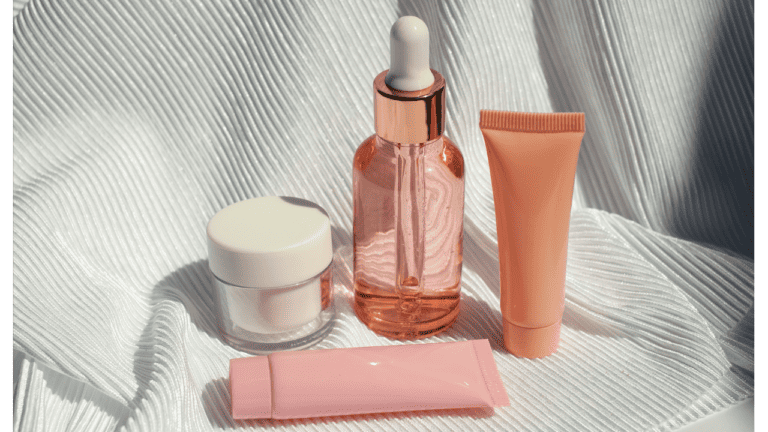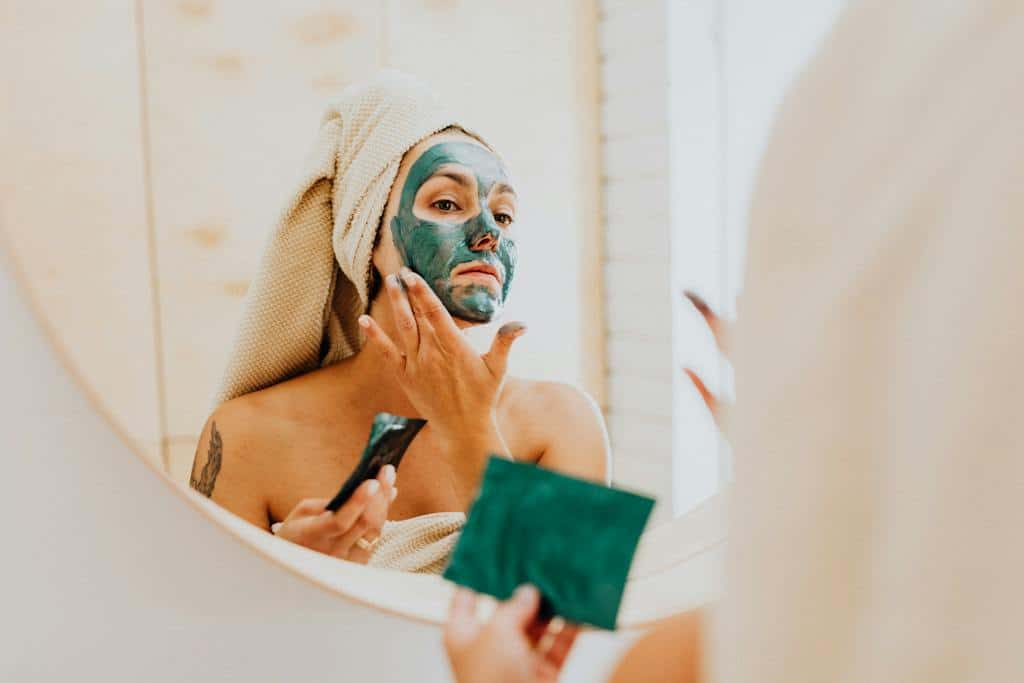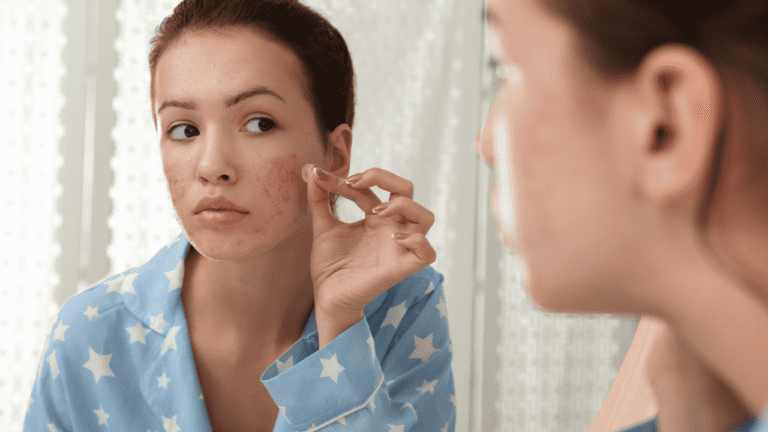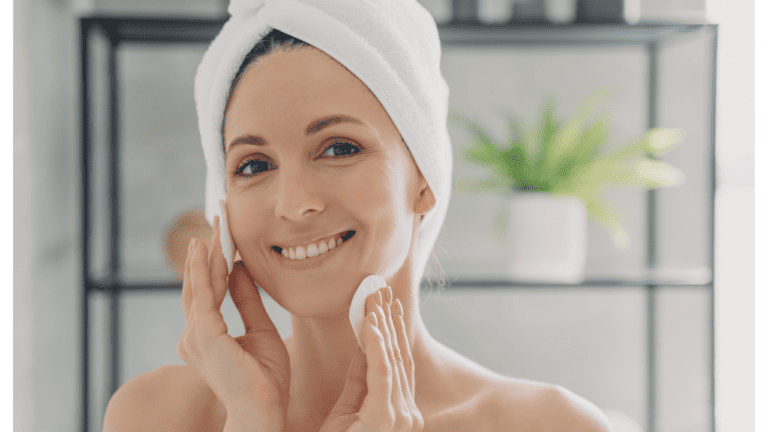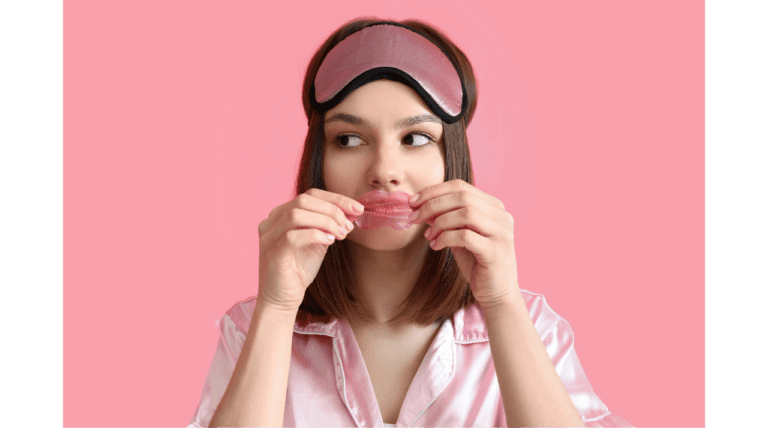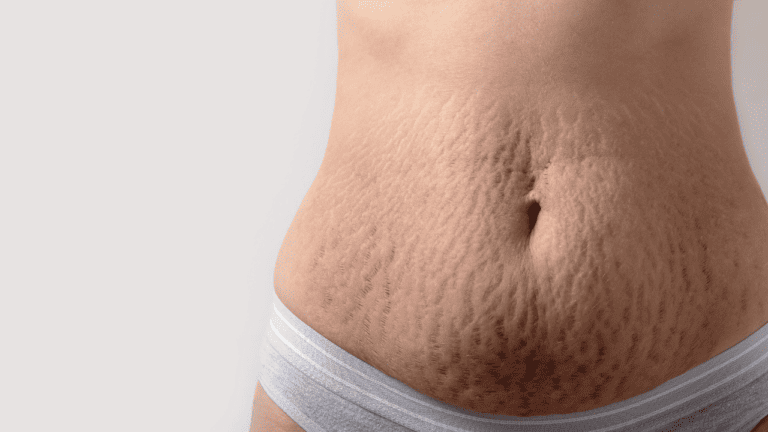Retinol is a popular skincare ingredient known for its anti-aging benefits. However, it can also cause skin peeling, which can be frustrating and uncomfortable. When retinol peeling hits, it’s important to know how to address it properly to minimize its effects and get back to smooth, healthy skin.
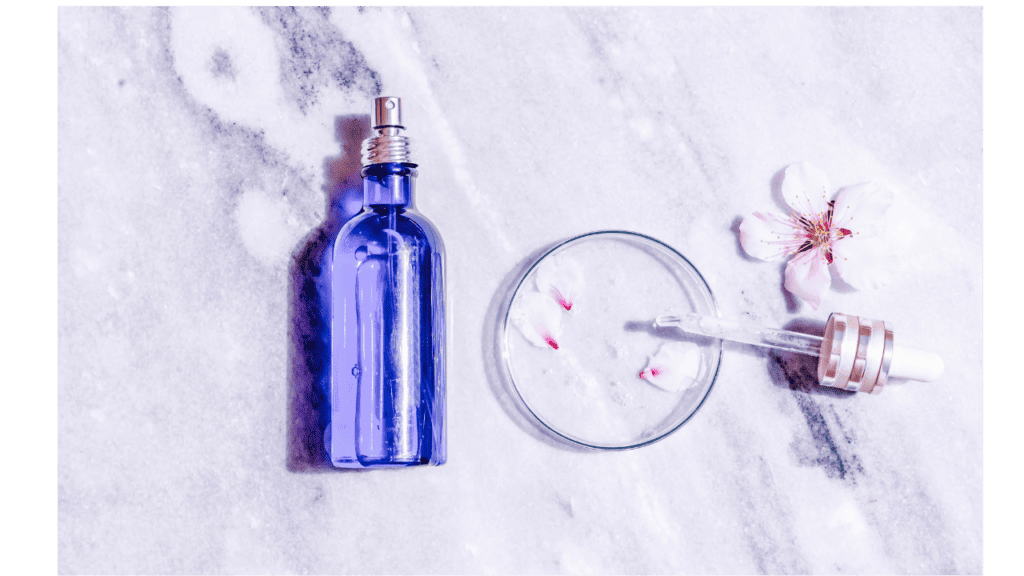
Immediate response to retinol peeling involves using a thick, moisturizing agent such as Vaseline or Aquaphor to lock in moisture and soothe the skin. Another trending technique for moisture-locking is slugging, which involves applying a layer of petroleum jelly or other occlusive moisturizer on top of your regular skincare products at night. Integrating moisturizers into your skincare routine can also help prevent peeling from occurring in the first place.
Long-term skincare strategies for dealing with retinol peeling include gradually building up your skin’s tolerance to retinol by starting with a lower concentration and using it less frequently. Protecting your skin during the day with sunscreen and avoiding harsh exfoliants can also help prevent further damage. Alternative treatments and retinol substitutes such as glycolic acid, antioxidants, or peptides can also be used in lieu of retinol.
Key Takeaways
- Immediate response to retinol peeling involves using Vaseline, Aquaphor, or slugging to lock in moisture and soothe the skin.
- Long-term skincare strategies include gradually building up skin’s tolerance to retinol, protecting skin during the day with sunscreen, and avoiding harsh exfoliants.
- Alternative treatments and retinol substitutes such as glycolic acid, antioxidants, or peptides can also be used in lieu of retinol.
Understanding Retinol and Skin Peeling

The Role of Retinol in Skincare
Retinol is a derivative of vitamin A that is commonly used in skincare products due to its ability to improve the texture and appearance of the skin. It works by increasing cell turnover, which helps to remove dead skin cells and promote the growth of new, healthy skin cells. This process can lead to a smoother, brighter complexion and can also help to reduce the appearance of fine lines and wrinkles.
Retinol is a type of retinoid, which is a class of compounds that are derived from vitamin A. Retinoids are known for their ability to improve skin texture and reduce the signs of aging. However, they can also cause side effects such as peeling, redness, and irritation.
Why Retinol Causes Peeling
Retinol works by increasing cell turnover, which can cause the skin to become dry and flaky. This process is known as retinol peeling or the retinol uglies. While this side effect can be frustrating, it is a sign that the product is working and that the skin is undergoing a process of renewal.
To minimize the effects of retinol peeling, it is important to moisturize the skin regularly. This can help to reduce dryness and flakiness and can also help to soothe any irritation or redness. Some people also find that using Vaseline or “slugging” can be helpful in preventing retinol peeling. Slugging involves applying a thick layer of Vaseline or petroleum jelly to the skin before bed, which can help to lock in moisture and prevent dryness and flakiness.
Overall, retinol can be a powerful tool in improving the texture and appearance of the skin. However, it is important to be aware of the potential side effects and to take steps to minimize them, such as moisturizing regularly and using Vaseline or slugging.
Immediate Response to Retinol Peeling

When retinol peeling hits, it’s important to take immediate action to soothe and heal the skin. Here are some steps to take:
Assessing Skin Irritation
The first step is to assess the severity of the skin irritation. If the skin is red, inflamed, or painful, it’s important to stop using retinol immediately. Continuing to use retinol can worsen the irritation and cause further damage to the skin barrier.
First Aid for Peeling Skin
The next step is to provide first aid for peeling skin. This includes:
-
Moisturizing: Applying a moisturizer can help soothe and hydrate the skin. Look for a moisturizer that is free of fragrances and other irritants. Ingredients like ceramides, hyaluronic acid, and glycerin can help restore the skin barrier and improve hydration.
-
Vaseline: Applying a thin layer of Vaseline or petroleum jelly to the affected area can help lock in moisture and prevent further irritation. Vaseline is an occlusive, which means it forms a barrier on the skin that helps to prevent water loss.
-
Slugging: Slugging is a skincare technique that involves applying a layer of petroleum jelly or other occlusive over your moisturizer. This can help to further lock in moisture and prevent water loss.
It’s important to note that while these steps can help soothe and heal the skin, they are not a substitute for professional medical advice. If the skin irritation persists or worsens, it’s important to see a dermatologist for further evaluation and treatment.
Slugging: A Trending Moisture-Locking Technique

Slugging is a popular skincare technique that involves applying a thick layer of petroleum jelly, such as Vaseline, to the face before bedtime. The occlusive nature of the jelly forms a barrier on the skin’s surface, preventing moisture loss and locking in hydration.
How Slugging Works
When the skin’s barrier is compromised, it loses moisture, leading to dryness, flakiness, and peeling. Slugging helps to restore the skin barrier by creating a protective layer that seals in moisture, allowing the skin to heal and regenerate. The petroleum jelly in slugging is an occlusive that prevents water from evaporating from the skin’s surface. This allows the skin to retain moisture, making it soft, supple, and hydrated.
Pros and Cons of Slugging
Slugging has several benefits, including:
- Locks in moisture: The occlusive nature of petroleum jelly helps to lock in moisture, preventing water loss and keeping the skin hydrated.
- Heals dry, flaky skin: Slugging helps to restore the skin barrier, allowing the skin to heal and regenerate.
- Inexpensive: Petroleum jelly is an affordable skincare product that is readily available in most drugstores.
However, there are also some cons to slugging:
- Clogs pores: The thick layer of petroleum jelly may clog pores, leading to breakouts and acne.
- Not suitable for oily skin: Slugging may not be suitable for people with oily skin as it may exacerbate oiliness and cause breakouts.
- May not work for everyone: Slugging may not work for everyone, and some people may experience adverse reactions such as irritation or allergic reactions.
In summary, slugging is a trending skincare technique that can help to lock in moisture and restore the skin’s barrier. However, it may not be suitable for everyone, and people with oily skin should use it with caution.
Integrating Moisturizers with Retinol Use

Retinol is a powerful ingredient that can cause skin peeling and dryness. Integrating moisturizers with retinol use is essential to minimize these side effects. Here are some tips on choosing the right moisturizer, timing, and application:
Choosing the Right Moisturizer
When it comes to choosing the right moisturizer for retinol use, it is important to consider your skin type. For dry skin, a heavy cream or lotion is ideal, while oily skin types should opt for a lightweight, oil-free moisturizer.
Hydrating and moisturizing ingredients such as hyaluronic acid, ceramides, and niacinamide are also beneficial for the skin. Hyaluronic acid attracts and retains moisture, while ceramides help to strengthen the skin barrier. Niacinamide is known for its anti-inflammatory properties and can help to reduce redness and irritation.
Sensitive skin types should look for fragrance-free and hypoallergenic moisturizers to avoid any potential irritation.
Timing and Application
Timing and application are crucial when it comes to integrating moisturizers with retinol use. It is recommended to wait at least 20 minutes after applying retinol before applying moisturizer to allow the retinol to fully absorb into the skin.
When applying moisturizer, it is important to be gentle and avoid rubbing or tugging at the skin. Instead, use a gentle patting motion to apply the moisturizer evenly.
For those experiencing severe skin peeling or dryness, “slugging” can be an effective technique. This involves applying a layer of Vaseline or petroleum jelly over the moisturizer to lock in hydration and prevent water loss.
In summary, integrating moisturizers with retinol use is crucial for maintaining healthy, hydrated skin. Choosing the right moisturizer for your skin type and applying it correctly can help to minimize side effects and maximize the benefits of retinol.
Long-Term Skincare Strategies
Retinol is a powerful ingredient that can help improve the appearance of fine lines, wrinkles, and acne. However, it can also cause peeling and dryness, especially in the first few weeks of use. While there are ways to deal with these side effects, it’s also important to develop long-term skincare strategies to maintain healthy, glowing skin.
Adjusting Your Skincare Routine
One of the most effective ways to prevent retinol peeling is to adjust your skincare routine. This can include using a gentle cleanser, avoiding harsh exfoliants, and incorporating moisturizing products. It’s also important to give your skin time to adjust to the retinol. Start by using it once or twice a week, then gradually increase the frequency as your tolerance improves.
Another strategy is to use a technique called “slugging,” which involves applying a layer of Vaseline or other occlusive moisturizer over your skincare products. This can help lock in moisture and prevent dryness and peeling.
When to Consult a Dermatologist
If you’re experiencing severe peeling or irritation, it may be time to consult a dermatologist. They can help you determine the best retinol usage for your skin type and recommend products that can help maintain collagen production and prevent anti-aging.
In some cases, a prescription retinoid may be necessary to achieve the desired results. A dermatologist can also recommend other skincare products that can complement your retinol usage and help maintain healthy, glowing skin.
Overall, developing a long-term skincare strategy is essential for maintaining healthy, glowing skin while using retinol. By adjusting your skincare routine, consulting a dermatologist, and using high-quality skincare products, you can achieve the best possible results and maintain your skin’s health and beauty for years to come.
Protecting Skin During the Day
When using retinol, protecting skin during the day is just as important as treating it at night. Here are some tips for daytime skincare:
Importance of Sunscreen
Applying sunscreen is crucial when using retinol. Retinol makes skin more sensitive to the sun, so it’s important to use a broad-spectrum sunscreen with at least SPF 30 daily. 1 This will help protect the skin from harmful UV rays and prevent further damage.
Makeup and Sensitive Skin
For those with sensitive skin, finding the right makeup products can be a challenge. When dealing with retinol peeling, it’s important to choose makeup that won’t further irritate the skin. Look for foundations and concealers that are labeled as “non-comedogenic” and “fragrance-free.” 2 These products are less likely to clog pores and cause breakouts.
Additionally, it’s important to avoid makeup products that contain ingredients that can be irritating to the skin, such as alcohol or fragrances. Instead, opt for products with soothing ingredients like aloe vera or chamomile. 3
Overall, taking care of skin during the day is just as important as taking care of it at night. By using sunscreen and choosing the right makeup products, those dealing with retinol peeling can protect their skin and prevent further irritation.
Footnotes
Alternative Treatments and Retinol Substitutes
Retinol peeling can be a frustrating side effect of using retinol. However, there are alternative treatments and retinol substitutes that can help reduce the peeling and irritation.
Natural Retinol Alternatives
One natural retinol alternative that has gained popularity in recent years is bakuchiol. Bakuchiol is a plant-based ingredient that has been shown to have similar benefits to retinol, such as reducing fine lines and wrinkles, without the harsh side effects. It is a gentle alternative that can be used by those with sensitive skin.
Other natural retinol alternatives include rosehip oil, which contains small amounts of retinoic acid and can help regenerate the skin, and carrot seed oil, which is rich in beta-carotene and antioxidants that can help improve skin texture and tone.
Chemical Exfoliants and Peels
Chemical exfoliants and peels can also help reduce the peeling and irritation caused by retinol. AHAs, such as glycolic acid, and BHAs, such as salicylic acid, can help exfoliate the skin and promote cell turnover. However, it is important to be cautious when using these ingredients, as they can also cause irritation if not used properly.
Benzoyl peroxide is another chemical exfoliant that can help reduce peeling and irritation. It works by killing acne-causing bacteria and can also help unclog pores. However, it can be drying and may not be suitable for those with sensitive skin.
It is important to note that while these alternative treatments and retinol substitutes can help reduce the peeling and irritation caused by retinol, they may not provide the same anti-aging benefits as retinol. It is always best to consult with a dermatologist to determine the best course of action for your individual skin concerns.
Frequently Asked Questions
How can I manage skin peeling after applying retinol?
Skin peeling is a common side effect of retinol use. To manage this, it is recommended to use a gentle cleanser and moisturizer. The use of a moisturizer with hyaluronic acid can help to keep the skin hydrated and prevent further peeling. Additionally, it is important to avoid over-exfoliating or using other harsh skincare products while the skin is peeling.
Is it safe to continue using retinol when experiencing peeling, and what precautions should I take?
It is generally safe to continue using retinol when experiencing peeling, but it is important to take precautions to prevent further irritation. This includes avoiding other potentially irritating skincare products, such as those containing alpha-hydroxy acids or benzoyl peroxide. Additionally, it is recommended to use retinol less frequently or use a lower concentration to reduce the risk of peeling.
What are the benefits of slugging with Vaseline over retinol-treated skin?
Slugging with Vaseline can help to lock in moisture and prevent further peeling. The occlusive nature of Vaseline can also help to reduce the appearance of fine lines and wrinkles. However, it is important to note that Vaseline should not be used as a substitute for a moisturizer, as it does not provide any additional skin benefits beyond hydration.
How long does it typically take for tretinoin-related peeling to subside?
The length of time it takes for tretinoin-related peeling to subside can vary depending on the individual and the severity of the peeling. In general, it can take anywhere from a few days to a few weeks for the peeling to subside. It is important to continue using a gentle cleanser and moisturizer during this time to help manage the peeling and prevent further irritation.

